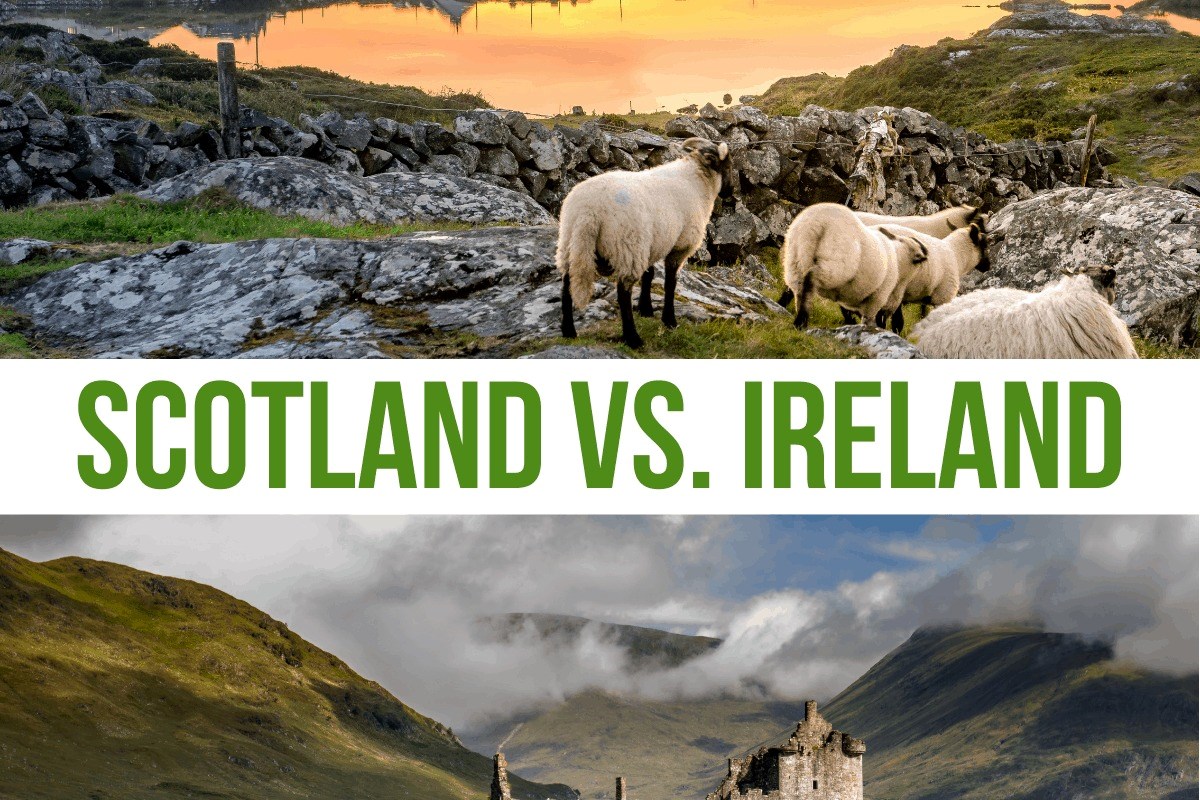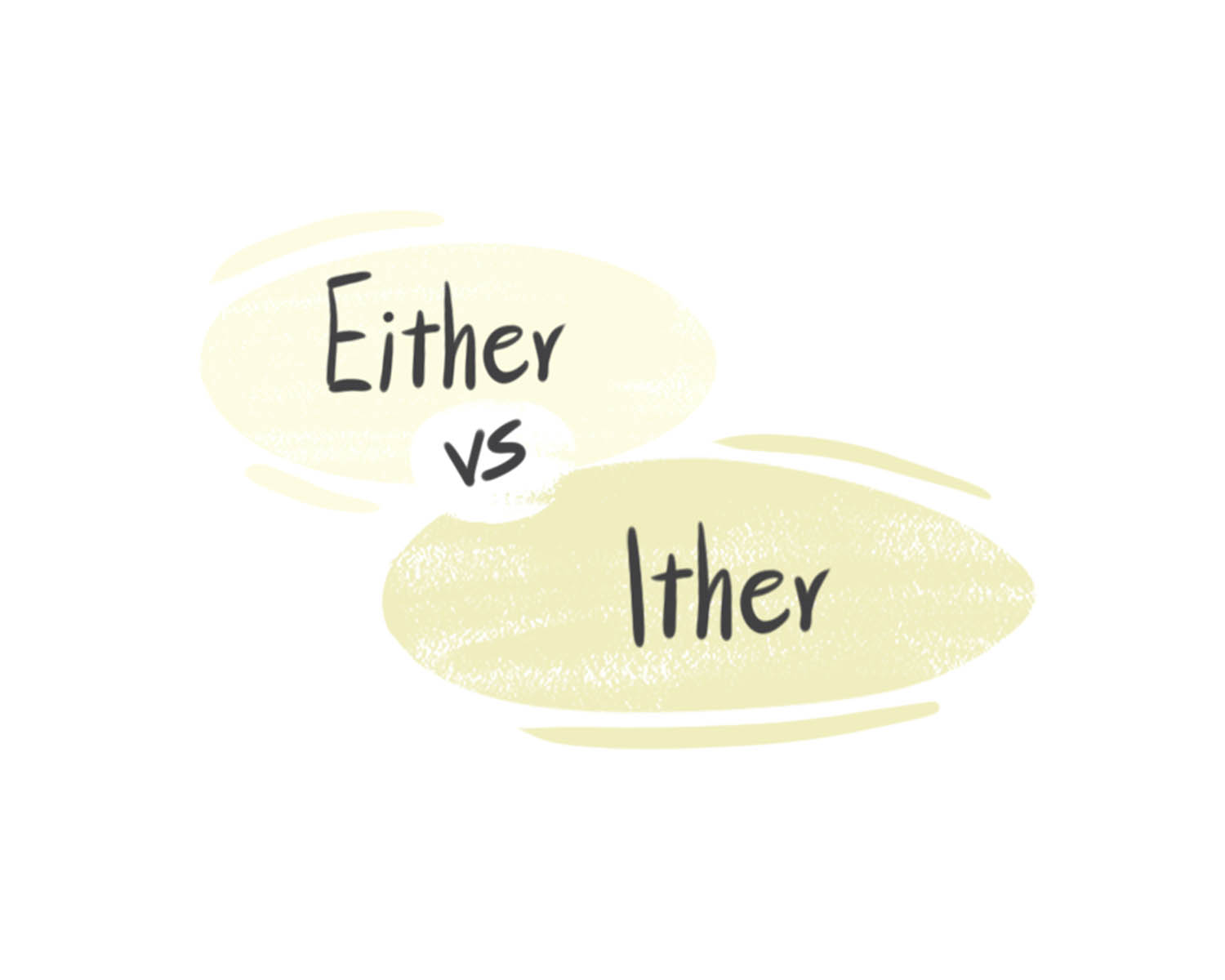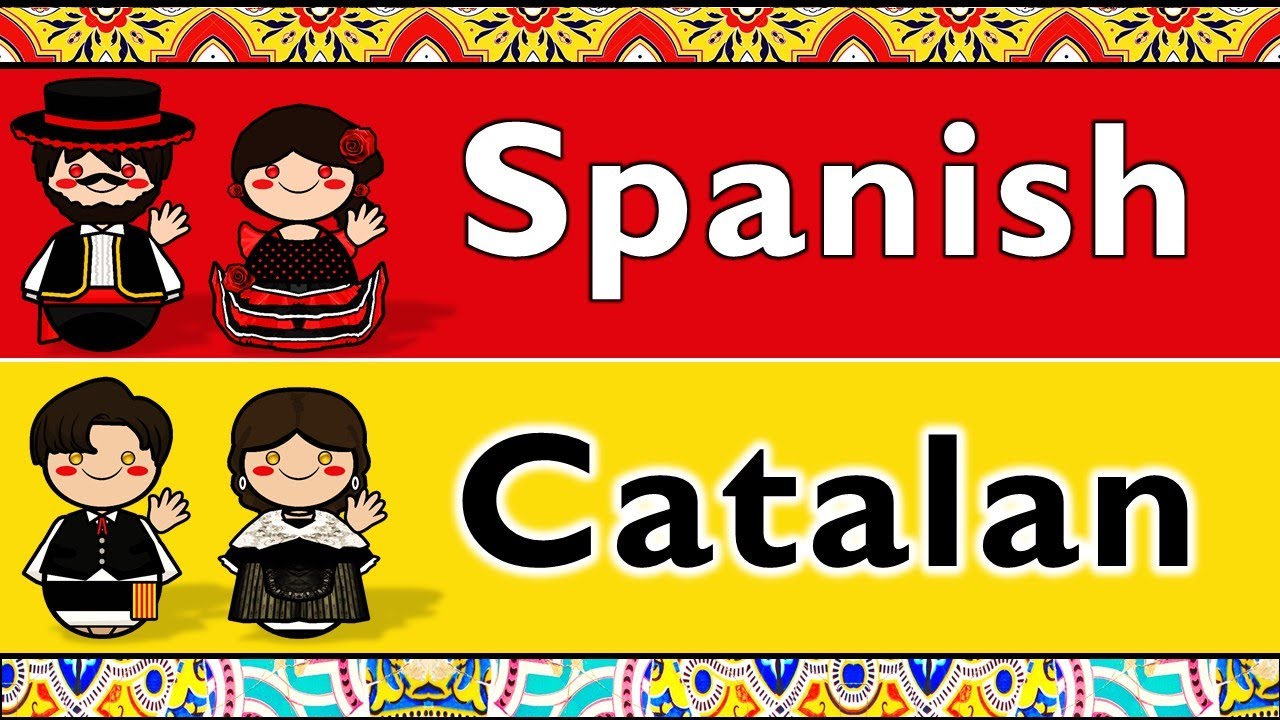Home>Politics and Government>The Surprising Difference Between Multi-State Nations And Multi-Nation States


Politics and Government
The Surprising Difference Between Multi-State Nations And Multi-Nation States
Modified: March 3, 2024
Discover the intriguing contrast between multi-state nations and multi-nation states in the realm of politics and government. Explore the complexities of governance and identity in diverse geopolitical entities.
(Many of the links in this article redirect to a specific reviewed product. Your purchase of these products through affiliate links helps to generate commission for Noodls.com, at no extra cost. Learn more)
Table of Contents
Introduction
In the realm of politics and governance, the concepts of multi-state nations and multi-nation states hold significant relevance, often shaping the dynamics of international relations and domestic policies. Understanding the nuances between these two entities is crucial for comprehending the complexities of modern geopolitical landscapes. While the terms may sound similar, they represent distinct configurations of nations and states, each with its own implications and considerations.
Delving into the intricacies of multi-state nations and multi-nation states unveils a tapestry of diversity, history, and societal dynamics. From the border-straddling identities of multi-state nations to the coexistence of multiple nations within a single state, these constructs embody the rich tapestry of human civilization and the complexities of national identity.
As we embark on this exploration, we will unravel the defining characteristics of multi-state nations and multi-nation states, examining real-world examples to illustrate their manifestations. By shedding light on the surprising differences between these entities, we aim to provide a comprehensive understanding of their implications and considerations in the contemporary global context. Through this journey of discovery, we will gain insights into the intricate interplay of culture, politics, and sovereignty, offering a deeper appreciation for the diverse forms of governance and national affiliation that shape our world.
Defining Multi-State Nations
Multi-state nations are characterized by the presence of a single nation or ethnic group that spans across multiple sovereign states. This unique configuration often arises from historical migrations, territorial divisions, or geopolitical shifts, resulting in the dispersion of a cohesive national identity across distinct political boundaries. Despite being geographically fragmented, the members of a multi-state nation share a common cultural, linguistic, or historical heritage that unites them as a singular national entity.
The defining feature of multi-state nations lies in the dispersion of a cohesive national identity across multiple sovereign states. This dispersion can lead to complex geopolitical dynamics, as the interests and aspirations of the multi-state nation may intersect with the policies and agendas of the respective states in which its members reside. This intricate interplay of national identity, statehood, and international relations underscores the unique challenges and opportunities presented by multi-state nations.
In essence, multi-state nations embody the resilience and adaptability of national identities in the face of geopolitical realities. They often navigate complex diplomatic landscapes, seeking to preserve and promote their cultural heritage and collective identity across diverse political contexts. This can give rise to intricate relationships between the multi-state nation and the states in which its members reside, as well as potential transnational collaborations and tensions that stem from the shared national affiliation.
The concept of multi-state nations underscores the fluidity of national boundaries and the enduring nature of cultural ties that transcend geopolitical divisions. It illuminates the intricate ways in which national identity evolves and persists across diverse territorial landscapes, shaping the dynamics of international relations and domestic policies. By recognizing and understanding the complexities of multi-state nations, we gain valuable insights into the diverse expressions of national identity and the enduring connections that bind communities across geopolitical divides.
Characteristics of Multi-State Nations
Multi-state nations are characterized by the presence of a single nation or ethnic group that spans across multiple sovereign states. This unique configuration often arises from historical migrations, territorial divisions, or geopolitical shifts, resulting in the dispersion of a cohesive national identity across distinct political boundaries. Despite being geographically fragmented, the members of a multi-state nation share a common cultural, linguistic, or historical heritage that unites them as a singular national entity.
The defining feature of multi-state nations lies in the dispersion of a cohesive national identity across multiple sovereign states. This dispersion can lead to complex geopolitical dynamics, as the interests and aspirations of the multi-state nation may intersect with the policies and agendas of the respective states in which its members reside. This intricate interplay of national identity, statehood, and international relations underscores the unique challenges and opportunities presented by multi-state nations.
In essence, multi-state nations embody the resilience and adaptability of national identities in the face of geopolitical realities. They often navigate complex diplomatic landscapes, seeking to preserve and promote their cultural heritage and collective identity across diverse political contexts. This can give rise to intricate relationships between the multi-state nation and the states in which its members reside, as well as potential transnational collaborations and tensions that stem from the shared national affiliation.
The concept of multi-state nations underscores the fluidity of national boundaries and the enduring nature of cultural ties that transcend geopolitical divisions. It illuminates the intricate ways in which national identity evolves and persists across diverse territorial landscapes, shaping the dynamics of international relations and domestic policies. By recognizing and understanding the complexities of multi-state nations, we gain valuable insights into the diverse expressions of national identity and the enduring connections that bind communities across geopolitical divides.
Examples of Multi-State Nations
One prominent example of a multi-state nation is the Kurdish people, whose ancestral homeland spans across several modern-day countries, including Turkey, Iraq, Iran, and Syria. Despite the geopolitical divisions that separate these territories, the Kurdish population maintains a distinct cultural and historical identity, rooted in a shared language, traditions, and aspirations for self-determination. The dispersion of the Kurdish people across multiple sovereign states has given rise to complex geopolitical dynamics, as their quest for autonomy and recognition intersects with the policies and interests of the respective nation-states in which they reside. The Kurdish struggle for self-governance and recognition serves as a compelling illustration of the challenges and opportunities inherent in the multi-state nation paradigm.
Another example can be found in the Romani people, also known as Roma, whose diasporic presence extends across various European countries. The Roma community, characterized by a rich cultural heritage and a history of nomadic traditions, transcends national borders, contributing to the fabric of diverse societies while facing challenges related to social inclusion and recognition of their distinct identity. The dispersed nature of the Romani population across multiple European states underscores the complexities of navigating cultural preservation, social integration, and political representation within the context of multi-state nations.
Furthermore, the Palestinian people exemplify the multi-state nation framework, with a significant population residing in territories such as the West Bank, Gaza Strip, and diaspora communities scattered across different countries. The Palestinian struggle for statehood and self-determination intersects with the geopolitical realities of the Middle East, highlighting the intricate dynamics of national identity, territorial sovereignty, and international diplomacy within the context of multi-state nations.
These examples underscore the diverse manifestations of multi-state nations, where shared cultural, linguistic, or historical ties transcend geopolitical boundaries, shaping the experiences and aspirations of communities dispersed across multiple sovereign states. By examining the complexities and challenges faced by multi-state nations, we gain valuable insights into the intricate interplay of national identity, statehood, and international relations in the contemporary global landscape.
Defining Multi-Nation States
Multi-nation states, in contrast to multi-state nations, are characterized by the coexistence of multiple distinct nations or ethnic groups within a single sovereign state. This configuration often arises from historical legacies, geopolitical amalgamations, or intentional state-building efforts that have brought together diverse cultural and ethnic communities under a unified political entity. Unlike multi-state nations, where a single nation spans across multiple states, multi-nation states encompass a mosaic of distinct national identities cohabiting within a shared territorial framework.
The defining feature of multi-nation states lies in the coexistence of diverse national identities within a unified political and administrative structure. This cohabitation can give rise to complex dynamics related to cultural autonomy, linguistic diversity, and political representation, as the distinct nations or ethnic groups seek to preserve and promote their unique heritage within the broader framework of the multi-nation state. The intricate interplay of national identities, governance structures, and societal cohesion shapes the fabric of multi-nation states, presenting both opportunities for cultural enrichment and challenges related to equitable representation and social cohesion.
In essence, multi-nation states embody the complexities and richness of cultural diversity within a singular political entity. The coexistence of multiple nations or ethnic groups within a shared territorial framework underscores the dynamic interplay of identity, citizenship, and collective rights, shaping the contours of governance, public policy, and social cohesion. By recognizing and understanding the nuances of multi-nation states, we gain valuable insights into the intricate dynamics of cultural pluralism and nation-building within the context of a unified state framework.
The concept of multi-nation states illuminates the intricate ways in which diverse national identities intersect and interact within the context of a singular political entity, enriching the tapestry of societal and political life. By examining the defining characteristics of multi-nation states, we gain a deeper appreciation for the complexities and opportunities inherent in managing cultural diversity, fostering inclusive governance, and nurturing cohesive national identities within the framework of a unified state.
Characteristics of Multi-Nation States
Multi-nation states are characterized by the coexistence of multiple distinct nations or ethnic groups within a single sovereign state. This unique configuration gives rise to a mosaic of cultural, linguistic, and historical identities that intersect within a unified political framework. The defining feature of multi-nation states lies in the dynamic interplay of diverse national identities, governance structures, and societal cohesion. This cohabitation fosters a rich tapestry of cultural diversity and heritage within a singular political entity.
One of the key characteristics of multi-nation states is the presence of distinct national identities that contribute to the cultural mosaic of the state. These identities are often rooted in historical legacies, linguistic diversity, and unique traditions, reflecting the enduring heritage of diverse communities cohabiting within the shared territorial framework. The recognition and preservation of these distinct national identities form an integral aspect of the multi-nation state paradigm, shaping the dynamics of citizenship, cultural autonomy, and collective rights.
Furthermore, multi-nation states exhibit complex dynamics related to governance and political representation. The coexistence of multiple nations or ethnic groups within a unified state necessitates inclusive governance structures that accommodate diverse perspectives and aspirations. This can manifest in mechanisms for cultural autonomy, linguistic rights, and equitable political participation, reflecting the commitment to fostering inclusive governance and societal cohesion within the multi-nation state.
Moreover, the societal fabric of multi-nation states is characterized by the interplay of cultural pluralism and nation-building. The cohabitation of diverse national identities within a singular political entity enriches the tapestry of societal life, contributing to a dynamic landscape of cultural exchange, interethnic dialogue, and collective heritage. This interplay fosters a sense of shared citizenship while honoring the unique contributions of each nation or ethnic group to the broader societal tapestry.
In essence, the characteristics of multi-nation states underscore the complexities and opportunities inherent in managing cultural diversity and fostering inclusive governance within a unified state framework. The coexistence of multiple distinct nations or ethnic groups within a shared territorial framework enriches the societal fabric, shaping the contours of governance, public policy, and social cohesion within the multi-nation state.
Examples of Multi-Nation States
One notable example of a multi-nation state is Canada, where diverse national identities, including Indigenous nations, English-speaking Canadians, and French-speaking Canadians, coexist within a unified political framework. The historical and contemporary presence of distinct nations and ethnic groups has shaped Canada's cultural landscape, contributing to a rich tapestry of traditions, languages, and governance structures. The recognition of Indigenous nations' rights and the official bilingualism reflecting the coexistence of English and French languages exemplify the complexities and opportunities inherent in managing cultural diversity within a unified state framework.
Another compelling example is Belgium, characterized by the cohabitation of the Flemish, Walloon, and German-speaking communities within a federal state structure. The distinct linguistic and cultural identities of these communities intersect within the unified framework of the Belgian state, fostering a dynamic interplay of governance, language rights, and regional autonomy. The federal system of governance in Belgium reflects the commitment to accommodating diverse national identities while nurturing cohesive societal cohesion.
Furthermore, the multi-nation state of Switzerland exemplifies the coexistence of diverse linguistic and cultural communities, including the German, French, Italian, and Romansh-speaking populations, within a federal state structure. Switzerland's commitment to linguistic diversity, regional autonomy, and direct democracy reflects the complexities and opportunities inherent in managing cultural pluralism within a unified state framework. The federal system of governance, linguistic rights, and cultural preservation efforts underscore the dynamic interplay of diverse national identities within the Swiss political landscape.
These examples illustrate the diverse manifestations of multi-nation states, where the coexistence of distinct national identities enriches the societal fabric, shaping the contours of governance, public policy, and social cohesion. By examining the complexities and opportunities presented by multi-nation states, we gain valuable insights into the dynamic interplay of cultural diversity, inclusive governance, and cohesive nation-building within the context of a unified state.
The Surprising Differences
The distinction between multi-state nations and multi-nation states unveils a set of surprising differences that illuminate the diverse configurations of national identity and statehood. While both concepts involve the coexistence of multiple nations or ethnic groups, their structural dynamics and implications diverge in significant ways.
One of the striking differences lies in the spatial and geopolitical configurations of multi-state nations and multi-nation states. Multi-state nations are characterized by the dispersion of a singular nation across multiple sovereign states, each with its own political and administrative frameworks. This dispersion gives rise to complex transnational dynamics, as the members of the multi-state nation navigate diverse legal, cultural, and diplomatic landscapes. In contrast, multi-nation states encompass a mosaic of distinct nations or ethnic groups within a unified sovereign state, fostering a dynamic interplay of cultural pluralism and governance structures. The cohabitation of diverse national identities within a singular political entity shapes the societal fabric and governance mechanisms, reflecting a unique form of nation-building within a unified state framework.
Another surprising difference lies in the implications for national identity, cultural autonomy, and international relations. In the context of multi-state nations, the dispersion of a singular nation across multiple states can give rise to complex diplomatic dynamics, as the shared national identity intersects with diverse geopolitical interests and policies. The quest for recognition, autonomy, and cultural preservation unfolds within the intricate web of transnational relations, reflecting the resilience and adaptability of national identities across geopolitical divides. On the other hand, multi-nation states grapple with the complexities of fostering inclusive governance, linguistic diversity, and equitable representation within a unified state framework. The recognition and preservation of distinct national identities form an integral aspect of the multi-nation state paradigm, shaping the contours of citizenship, cultural autonomy, and collective rights within the shared territorial framework.
Furthermore, the surprising differences between multi-state nations and multi-nation states manifest in the management of cultural diversity, societal cohesion, and nation-building. Multi-state nations navigate the complexities of preserving and promoting a cohesive national identity across diverse political contexts, often engaging in transnational collaborations and negotiations to safeguard their cultural heritage. In contrast, multi-nation states foster a dynamic landscape of cultural exchange, interethnic dialogue, and collective heritage within a unified political entity, reflecting the commitment to accommodating diverse national identities while nurturing cohesive societal cohesion.
In essence, the surprising differences between multi-state nations and multi-nation states underscore the diverse expressions of national identity, statehood, and societal dynamics in the contemporary global context. By recognizing and understanding these differences, we gain valuable insights into the intricate interplay of culture, politics, and sovereignty, offering a deeper appreciation for the diverse forms of governance and national affiliation that shape our world.
Implications and Considerations
The distinction between multi-state nations and multi-nation states carries profound implications for governance, international relations, and societal cohesion. Understanding the implications and considerations associated with these diverse configurations of national identity and statehood is crucial for navigating the complexities of contemporary geopolitics and fostering inclusive societies.
In the context of multi-state nations, the dispersion of a singular nation across multiple sovereign states presents intricate implications for international relations and diplomatic dynamics. The quest for recognition, autonomy, and cultural preservation unfolds within the complex web of transnational interactions, requiring nuanced approaches to address the intersecting interests and policies of the respective states. This dynamic landscape underscores the need for diplomatic dialogue, cross-border cooperation, and mechanisms for safeguarding the rights and cultural heritage of dispersed national communities. Furthermore, the implications extend to the realm of governance, where accommodating the transnational dimensions of multi-state nations necessitates nuanced policy frameworks and cross-border collaborations to address the diverse needs and aspirations of the dispersed national community.
In contrast, the implications of multi-nation states revolve around fostering inclusive governance, preserving linguistic diversity, and nurturing cohesive societal cohesion within a unified state framework. The recognition and preservation of distinct national identities form an integral aspect of the multi-nation state paradigm, shaping the contours of citizenship, cultural autonomy, and collective rights within the shared territorial framework. Considerations for equitable representation, cultural preservation, and linguistic rights are paramount in ensuring the harmonious coexistence of diverse national communities within the unified state. Moreover, the implications extend to the promotion of intercultural dialogue, inclusive policies, and mechanisms for addressing historical grievances or disparities among the cohabiting nations or ethnic groups.
Both multi-state nations and multi-nation states present considerations related to cultural diversity, societal cohesion, and nation-building. The management of cultural pluralism, the preservation of heritage, and the fostering of inclusive governance are central to addressing the implications of these diverse configurations of national identity and statehood. Moreover, considerations for fostering cross-border collaboration, diplomatic dialogue, and mechanisms for cultural preservation are essential in the context of multi-state nations, while promoting inclusive governance, linguistic rights, and intercultural dialogue are vital considerations within multi-nation states.
In essence, the implications and considerations associated with multi-state nations and multi-nation states underscore the dynamic interplay of culture, politics, and sovereignty, offering valuable insights into the diverse forms of governance and national affiliation that shape our world. Recognizing and addressing these implications is essential for fostering inclusive societies, navigating complex diplomatic landscapes, and nurturing cohesive nation-building within the contemporary global context.
Conclusion
In conclusion, the exploration of multi-state nations and multi-nation states unveils a tapestry of diversity, historical legacies, and complex geopolitical dynamics that shape the contemporary global landscape. The surprising differences between these entities underscore the diverse configurations of national identity and statehood, illuminating the intricate interplay of culture, politics, and sovereignty. By delving into the defining characteristics, examples, and implications of multi-state nations and multi-nation states, we gain valuable insights into the complexities and opportunities inherent in managing cultural diversity, fostering inclusive governance, and nurturing cohesive nation-building within diverse geopolitical contexts.
The resilience and adaptability of national identities across geopolitical divides, as exemplified by multi-state nations, highlight the enduring nature of cultural ties that transcend political boundaries. The dispersion of a singular nation across multiple sovereign states gives rise to complex transnational dynamics, necessitating nuanced approaches to address intersecting interests and policies. The quest for recognition, autonomy, and cultural preservation unfolds within the intricate web of transnational interactions, underscoring the need for diplomatic dialogue, cross-border cooperation, and mechanisms for safeguarding the rights and cultural heritage of dispersed national communities.
Conversely, the coexistence of multiple distinct nations or ethnic groups within a unified sovereign state, as seen in multi-nation states, fosters a dynamic landscape of cultural exchange, interethnic dialogue, and collective heritage. The recognition and preservation of distinct national identities within a shared territorial framework shape the contours of citizenship, cultural autonomy, and collective rights. Considerations for fostering inclusive governance, preserving linguistic diversity, and nurturing cohesive societal cohesion within a unified state framework are paramount in ensuring the harmonious coexistence of diverse national communities.
By recognizing and understanding the implications and considerations associated with multi-state nations and multi-nation states, we gain valuable insights into the intricate interplay of culture, politics, and sovereignty, offering a deeper appreciation for the diverse forms of governance and national affiliation that shape our world. Navigating the complexities of contemporary geopolitics and fostering inclusive societies requires a nuanced understanding of the diverse expressions of national identity and statehood, reflecting the dynamic and ever-evolving tapestry of human civilization.













